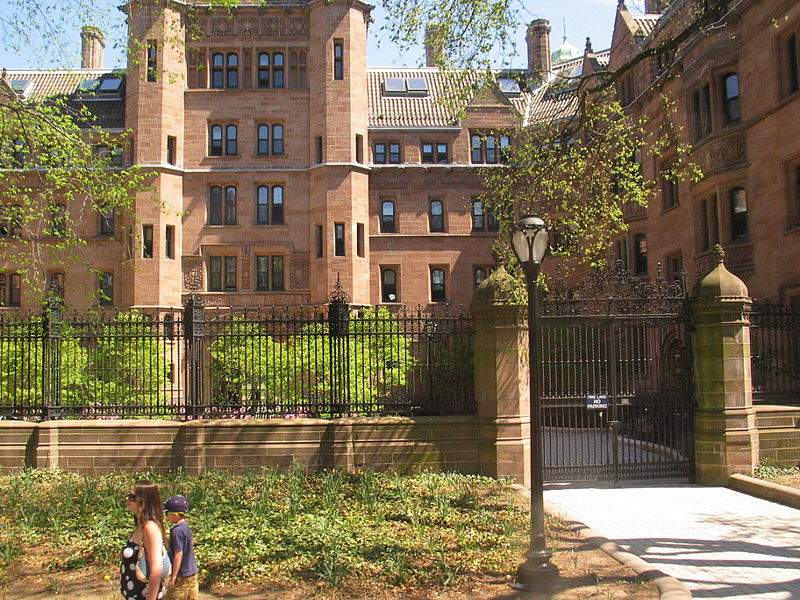Over the past few days, several newspapers, first in the United States and then also in Italy, have spread alarmist reports about a decision byYale University, which some say has eliminated the traditional introductory course in art history as being too Eurocentric and too calibrated on white artists, in order to introduce courses on the artistic expressions of cultures other than Western. Thus, amid half-truths and biased reporting, the idea has passed that Yale wanted to reduce the presence of “traditional” art, so to speak, in favor of that produced by non-Western cultures.
It is all very well explained, however, in a statement written by the chair of Yale’s Art History Department, Tim Barringer, and the department’s director of Undergraduate Studies ( undergraduate studies is the counterpart to our bachelor’s degree), Marisa Bass, discussed and approved by all members of the department. The issue concerns the two major survey courses (“introductory courses”) in art history that Yale offers to students. Survey courses, at U.S. universities, are semester-long courses that deal with topics in a general way, and for art history Yale has two: one that deals with the art history of the ancient Middle East, Egypt, and pre-Renaissance Europe, and the other that deals with European and American art history from the Renaissance to the present.
The statement first notes that, for more than a decade, Yale’s Art History Department has been dedicated to studying art in all its forms (thanks in part to the Yale University Art Gallery’s vast collections, which contain works and objects from all over the world), that “art history is a global discipline,” and that Yale University has ensured very important contributions to the studies of pre-Columbian art, African art, Asian art, and Islamic art (and, of course, European art). “The diversity of the department’s intellectual interests,” the statement reads, “is analogous to the diversity of today’s student body.” The point is that Yale “aims to offer the broadest possible selection of courses, well balanced across eras and places, keeping the study of Western art intense, from classical Greece to the Middle Ages, from the Renaissance to the Baroque, from nineteenth-century art to modern and contemporary art.”
Yale already has a wide range of courses covering different eras and different cultures (some of the courses are called, for example, “Power, Gender, and Ritual in African Art History,” “Arts of China,” “Sanctuaries in Syria and Phoenicia during the Roman Period,” “Russian Style: Material Culture and the Decorative Arts in Imperial Russia,” “Writers and Artists in Paris, 1780-1914,” “Greek Art and Architecture”). These are, therefore, very specific courses and on many topics. For introductory courses, however, it is a different matter, since, as mentioned above, there are only two. The idea, therefore, is to open new ones, including “Global Decorative Arts,” “Arts of the Silk Road,” “Global Sacred Art,” and “The Politics of Representation,” all of which, moreover, are designed to “reference Yale’s rich collections, but also to move across traditions and periods.”
Beginning in fall 2019, Yale has committed to offering four different introductory courses each year, “designed to introduce students who had no previous art history experience to the subject.” They are also “courses that cover a wide range in terms of geography and chronology.” “Essential to this decision,” the note goes on to say, "is the Department’s belief that no introductory course taught in the space of a semester can be so comprehensive, and that no introductory course can be considered the definitive course in our discipline."
Hence, the decision to replace the two traditional courses with new ones: “some,” the statement specifies, “will address the monuments and masterpieces of European and American art, while others will introduce other traditions of the world, and still others will be organized thematically so as to offer comparative perspectives.” However, the note concludes, “as always, our introductory courses will bring Yale students face-to-face encounters with works and objects of great beauty and cultural value that come from every place and era. We continue, more than ever, our commitment to the study of all forms of art, architecture and visual culture, and we continue to share our insights into works of art, from Parthenon sculptures to Benin bronzes, from Renaissance Florence to Aztec sculpture, from the Taj Mahal to performance and digital art.” And the fact that much attention has been paid to this decision “demonstrates,” according to members of the department, “how meaningful, vivid and even controversial the study of art history can and should be.”
No cancellation, in short: Yale students will continue to study Western art history as they always have. Only, the course will definitely change its name (it will probably have a title like “Introduction to the History of Western Art,” the same name by which Barringer already unofficially calls the current course) and will be joined by other courses that did not exist before.
Pictured: Vanderbilt Hall, Yale University
 |
| Yale cancels art history course for being too Eurocentric? Here's how things really are |
Warning: the translation into English of the original Italian article was created using automatic tools. We undertake to review all articles, but we do not guarantee the total absence of inaccuracies in the translation due to the program. You can find the original by clicking on the ITA button. If you find any mistake,please contact us.